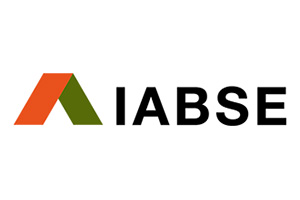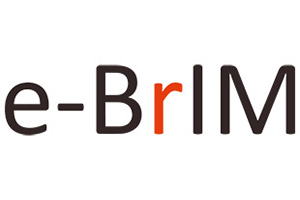-
Akshay Ponduru, Sai / Aylas-Paredes, Bryan K. / Han, Taihao / Neithalath, Advaith / Neithalath, Narayanan / Sant, Gaurav / Kumar, Aditya (2025): Effects of Gypsum and Limestone on Early-Age Hydration and Strength Optimization in Belite Calcium Sulfoaluminate Cement. In: Infrastructures, v. 10, n. 2 (22 January 2025).
https://doi.org/10.3390/infrastructures10020027
-
Surehali, Sahil / Han, Taihao / Huang, Jie / Kumar, Aditya / Neithalath, Narayanan (2024): On the use of machine learning and data-transformation methods to predict hydration kinetics and strength of alkali-activated mine tailings-based binders. In: Construction and Building Materials, v. 419 (March 2024).
https://doi.org/10.1016/j.conbuildmat.2024.135523
-
Bhat, Rohan / Han, Taihao / Sant, Gaurav / Neithalath, Narayanan / Kumar, Aditya (2024): A comprehensive analysis of hydration kinetics and compressive strength development of fly ash-Portland cement binders. In: Journal of Building Engineering, v. 88 (July 2024).
https://doi.org/10.1016/j.jobe.2024.109191
-
Akshay Ponduru, Sai / Han, Taihao / Huang, Jie / Neithalath, Narayanan / Sant, Gaurav / Kumar, Aditya (2024): Understanding roles and evaluating reactivity of fly ashes in calcium aluminate binders. In: Construction and Building Materials, v. 414 (February 2024).
https://doi.org/10.1016/j.conbuildmat.2024.135062
-
Han, Taihao / Huang, Jie / Sant, Gaurav / Neithalath, Narayanan / Goel, Ashutosh / Kumar, Aditya (2023): Modeling hydration kinetics of sustainable cementitious binders using an advanced nucleation and growth approach. In: Construction and Building Materials, v. 404 (November 2023).
https://doi.org/10.1016/j.conbuildmat.2023.133327
-
Cai, Rong / Han, Taihao / Liao, Wenyu / Huang, Jie / Li, Dawang / Kumar, Aditya / Ma, Hongyan (2020): Prediction of surface chloride concentration of marine concrete using ensemble machine learning. In: Cement and Concrete Research, v. 136 (October 2020).
https://doi.org/10.1016/j.cemconres.2020.106164
-
Kumar, Aditya / Bishnoi, Shashank / Scrivener, Karen L. (2012): Modelling early age hydration kinetics of alite. In: Cement and Concrete Research, v. 42, n. 7 (July 2012).
https://doi.org/10.1016/j.cemconres.2012.03.003
-
Sant, Gaurav / Kumar, Aditya / Patapy, Cédric / Le Saout, Gwenn / Scrivener, Karen (2012): The influence of sodium and potassium hydroxide on volume changes in cementitious materials. In: Cement and Concrete Research, v. 42, n. 11 (November 2012).
https://doi.org/10.1016/j.cemconres.2012.08.012
-
Jennings, Hamlin M. / Kumar, Aditya / Sant, Gaurav (2015): Quantitative discrimination of the nano-pore-structure of cement paste during drying: New insights from water sorption isotherms. In: Cement and Concrete Research, v. 76 (October 2015).
https://doi.org/10.1016/j.cemconres.2015.05.006
-
Kumar, Aditya / Sant, Gaurav / Patapy, Cédric / Gianocca, Caterina / Scrivener, Karen L. (2012): The influence of sodium and potassium hydroxide on alite hydration: Experiments and simulations. In: Cement and Concrete Research, v. 42, n. 11 (November 2012).
https://doi.org/10.1016/j.cemconres.2012.07.003
-
Vance, Kirk / Kumar, Aditya / Sant, Gaurav / Neithalath, Narayanan (2013): The rheological properties of ternary binders containing Portland cement, limestone, and metakaolin or fly ash. In: Cement and Concrete Research, v. 52 (October 2013).
https://doi.org/10.1016/j.cemconres.2013.07.007
-
Juilland, Patrick / Kumar, Aditya / Gallucci, Emmanuel / Flatt, Robert J. / Scrivener, Karen L. (2012): Effect of mixing on the early hydration of alite and OPC systems. In: Cement and Concrete Research, v. 42, n. 9 (September 2012).
https://doi.org/10.1016/j.cemconres.2011.06.011
-
Bhat, Rohan / Han, Taihao / Akshay Ponduru, Sai / Reka, Arianit / Huang, Jie / Sant, Gaurav / Kumar, Aditya (2022): Predicting compressive strength of alkali-activated systems based on the network topology and phase assemblages using tree-structure computing algorithms. In: Construction and Building Materials, v. 336 (June 2022).
https://doi.org/10.1016/j.conbuildmat.2022.127557
-
Cai, Rong / Hu, Yingshuang / Yu, Miao / Liao, Wenyu / Yang, Lufeng / Kumar, Aditya / Ma, Hongyan (2020): Skin effect of chloride ingress in marine concrete: A review on the convection zone. In: Construction and Building Materials, v. 262 (November 2020).
https://doi.org/10.1016/j.conbuildmat.2020.120566
-
Zhu, Yanping / Zhang, Yang / Qu, Shaoqin / Kumar, Aditya (2020): Flexural and Tensile Strength of Ultra-High-Performance Concrete with ZnPh-Treated Steel Fibers. In: Journal of Materials in Civil Engineering (ASCE), v. 32, n. 10 (October 2020).
https://doi.org/10.1061/(asce)mt.1943-5533.0003372
-
Zhang, Yang / Zhu, Yanping / Qu, Shaoqin / Kumar, Aditya / Shao, Xudong (2020): Improvement of flexural and tensile strength of layered-casting UHPC with aligned steel fibers. In: Construction and Building Materials, v. 251 (August 2020).
https://doi.org/10.1016/j.conbuildmat.2020.118893
-
Han, Taihao / Siddique, Ashfia / Khayat, Kamal / Huang, Jie / Kumar, Aditya (2020): An ensemble machine learning approach for prediction and optimization of modulus of elasticity of recycled aggregate concrete. In: Construction and Building Materials, v. 244 (May 2020).
https://doi.org/10.1016/j.conbuildmat.2020.118271
-
Cook, Rachel / Lapeyre, Jonathan / Ma, Hongyan / Kumar, Aditya (2019): Prediction of Compressive Strength of Concrete: Critical Comparison of Performance of a Hybrid Machine Learning Model with Standalone Models. In: Journal of Materials in Civil Engineering (ASCE), v. 31, n. 11 (November 2019).
https://doi.org/10.1061/(asce)mt.1943-5533.0002902
-
Oey, Tandre / Stoian, Julyan / Li, Jialin / Vong, Cecilia / Balonis, Magdalena / Kumar, Aditya / Franke, Wolfram / Sant, Gaurav (2015): Comparison of Ca(NO3)2 and CaCl2 Admixtures on Reaction, Setting, and Strength Evolutions in Plain and Blended Cementing Formulations. In: Journal of Materials in Civil Engineering (ASCE), v. 27, n. 10 (October 2015).
https://doi.org/10.1061/(asce)mt.1943-5533.0001240
-
Kumar, Aditya / Oey, Tandre / Falla, Guillermo Puerta / Henkensiefken, Ryan / Neithalath, Narayanan / Sant, Gaurav (2013): A comparison of intergrinding and blending limestone on reaction and strength evolution in cementitious materials. In: Construction and Building Materials, v. 43 (June 2013).
https://doi.org/10.1016/j.conbuildmat.2013.02.032
-
Puerta-Falla, Guillermo / Kumar, Aditya / Gomez-Zamorano, Lauren / Bauchy, Mathieu / Neithalath, Narayanan / Sant, Gaurav (2015): The influence of filler type and surface area on the hydration rates of calcium aluminate cement. In: Construction and Building Materials, v. 96 (October 2015).
https://doi.org/10.1016/j.conbuildmat.2015.08.094
-
Egan, Galen / Kumar, Aditya / Neithalath, Narayanan / Sant, Gaurav (2017): Re-examining the influence of the inclusion characteristics on the drying shrinkage of cementitious composites. In: Construction and Building Materials, v. 146 (August 2017).
https://doi.org/10.1016/j.conbuildmat.2017.04.048



